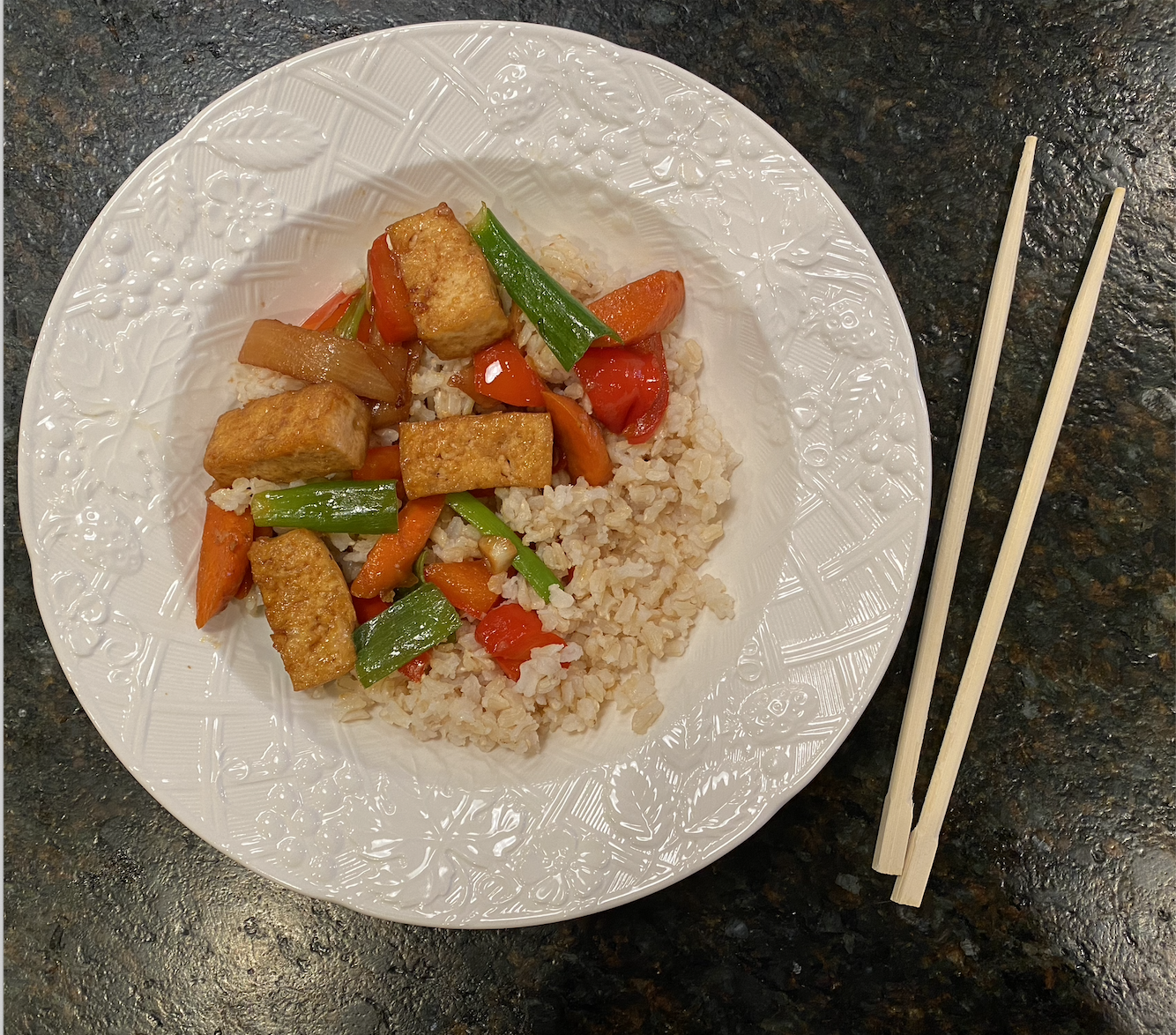Chinese Inspired Recipe
In my Ethnic and Therapeutic Meal Patterns course, we cooked themed meals pertaining to different populations and cultures each week —this week was Chinese Cuisine. I chose an authentic-inspired recipe, 家常豆腐 (Home style tofu) from Maggie Zhu, a New York based recipe developer.
家常豆腐 (Home style tofu) - Maggie Zhu
This recipe is representative of a conventional lunch or dinner in China which consists of fan (grain base), flavored with several side dishes (cai) made of vegetables, meat, bean curd (tofu), fish, or other protein to be used as a topping (Lipman, n.d.). The cai would be this recipe, consisting of the tofu and vegetables, which was served on top of the fan (rice). Chinese cuisine is also known for its use of contrasting flavors: the spicy from the doubajiang, the savory from chili, salt, and sesame oil, and the umami from the soy sauce (Lipman, n.d.).
This recipe included integral components to a traditional Chinese dish such as the bean curd (tofu), sauce, spice ingredients, vegetables used, and oil. This recipe was specific to the Sichuan province due to the use of doubajiang, a fermented spicy bean paste and fiery spice. In the place of doubajiang, I used Gochujang (Korean fermented chili paste) to try to encapsulate these elements.
I learned that Chinese cuisine includes almost no raw foods. China’s famous and distinctive cooking method is stir-frying (chao); cutting ingredients into small pieces and stirring them in extremely hot oil for a brief period. The oil is heated (sometimes until it catches fire) and the flavorings are put in first, then the main items (this method saves oil and fuel); and the cooking is almost instantaneous (“Asia and Oceania,” 2011).
In Chinese style of eating, each person has their own bowl of fan and then the cai is in one shared dish/bowl that people take small portions of and put on top of their rice (“Asia and Oceania,” 2011). Eating with chopsticks is also integral to Chinese foodways (Lipman, n.d.). My family and I partook in these traditional eating style for this meal.
This was a very flavorful, enjoyable, and educational eating occasion with my family!
Sources:
Asia and Oceania. (2011). In K. Albala (Ed.), Food Cultures of the World Encyclopedia (Vol. 3, p. v). Greenwood. https://link-gale-com.lehman.ezproxy.cuny.edu/apps/doc/CX1513300096/GVRL?u=cuny_main&sid=bookmark-GVRL&xid=06ee411d
Lipman, J. (n.d.). Chifanle meiyou? —“Have you eaten?” Retrieved August 7, 2021, from https://www.mtholyoke.edu/courses/jlipman/chifanlemeiyou.htm
Zhu, M. (2020, October 6). Home style tofu (家常豆腐). Omnivore’s Cookbook. https://omnivorescookbook.com/home-style-tofu/
